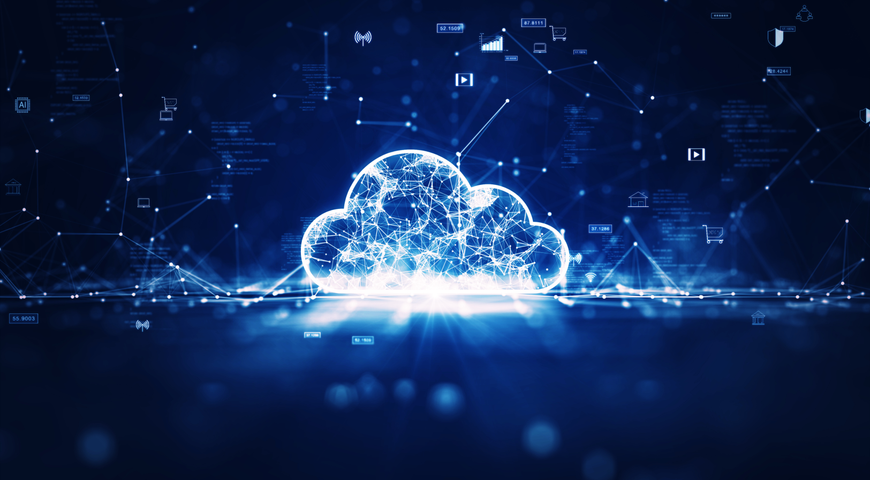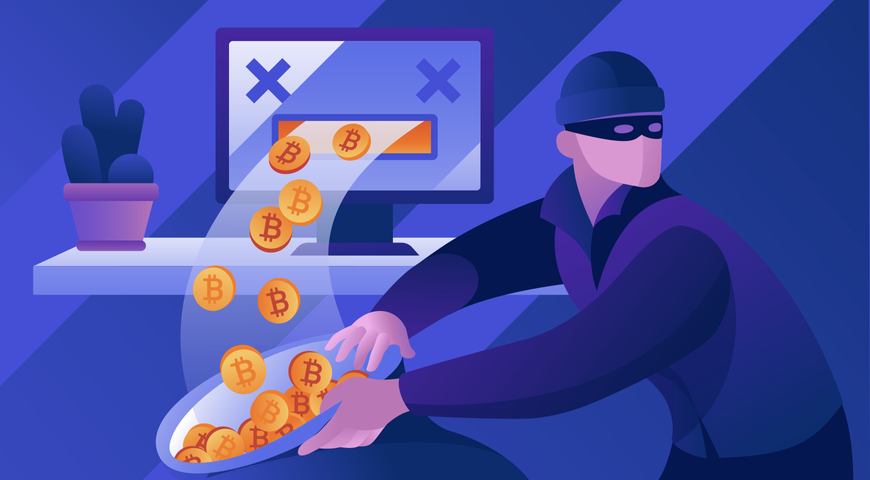
The modern threat landscape requires more than a shield
Modern businesses run on software. That software generates data, and that data is often the most valuable part of your entire business. Businesses rightfully understand that they need to protect that data, but they don’t necessarily know what that really means.
If you ask any executive whether they need to invest in cybersecurity, they’ll tell you, of course, they do. If you ask them whether they also need to invest in cyber resilience, they’ll probably look at you like you have two heads. Those two concepts aren’t the same, and understanding why you need to invest in both is critical to your business.
This isn’t an idle, academic concern, either. Ransomware is rampant in attacking modern businesses, with 59% of organizations experiencing a ransomware attack in a single year. And you likely already understand how costly downtime would be; think up to $9,000 per minute (Source: ringcentral).
In this post, we’re going to talk about why both cybersecurity and resilience are important and why you need to invest in both prevention and recovery to serve your organization at its best.
The core difference explained: A castle under siege
So, how should we think about the difference between cybersecurity and cyber resilience? One way to think about it is by imagining a castle under siege in a medieval story. Cybersecurity is easy to imagine: it represents the castle’s walls and military defenders, who are holding the attackers at bay.
Cyber resilience is a little more abstract. This represents the kingdom’s entire survival plan. That plan will include things like stored provisions, escape plans from the castle in case the walls fall, and a plan to rebuild infrastructure after the siege is broken.
It’s important to remember that, regardless of how big and strong your metaphorical castle wall is, you still need “gates” (like email), and those gates can always be breached. According to Keepnet, more than a third of ransomware attacks are initiated via email.
At a glance: Direct comparison chart
Here’s a quick breakdown on the differences between cybersecurity and cyber resilience:
What is cybersecurity? The essential first layer of protection
To really drill into things, it helps to understand the full breadth of what we mean by both cybersecurity and cyber resilience.
So, what do we mean by cybersecurity? For the purposes of this article, we’ll define cybersecurity as the full range of actions that you take to prevent malicious actors from compromising either your software or business data.
The core activities of your cybersecurity endeavors are probably familiar to any experienced IT leader. You’ll be looking to do things like blocking malware, filtering out phishing emails, managing authentication/authorization, and patching software vulnerabilities.
These are all key responsibilities in the world of cybersecurity, and you’ve no doubt seen a myriad of written pieces about the importance of each of these factors in securing digital assets.
In fact, Acronis provides high-quality cybersecurity software that you can start with today, which will help you move forward in each of these factors.
But cybersecurity isn’t the entire story, and you can’t ignore the importance of cyber resilience.
What is cyber resilience? The ability to bounce back stronger
Let’s flip things around, now. How does cyber resilience fit into the bigger business picture? Well, for starters, cyber resilience recognizes that no matter how good your cybersecurity, you’re eventually going to suffer an incident.
So cyber resilience takes a broader view: when you have an incident, how do you recover? How, when things go wrong, do you make sure that your data and systems come back like nothing ever happened?
The state of the industry lends itself to some pretty grim conclusions. When suffering a ransomware attack, more than a third of all organizations take better than a month to recover.
Barely a third managed to recover in less than a week. And, according to N2W, 80% of those who paid the ransom faced another attack. You can’t count on simply paying off attackers and returning to business.
Cyber resilience doesn’t just protect you in the event of a security incident. It ensures business continuity in the event of issues like a utility outage or a natural disaster.
Why you can't have one without the other
At this point, it’s obvious that you can’t have cyber resilience without cybersecurity, and that the reverse is also true. If you attempt resilience without security, you’ll spend all of your time recovering from attacks.
But if you attempt to have nothing but security, with no big-picture resilience, whenever attackers do break through your defenses, you’ll be left with no means to recover your assets.
That means that you need to do the hard work of creating a holistic resilience strategy while also doing the high-detail work that makes securing your digital assets so difficult. You need to blend those together in both the micro and macro to do the work your company needs.
Achieving true Resilience with an integrated platform
If you’ve been neglecting cyber resilience, we can help. We have a three-step resilience framework that’ll help you get back on track straightaway. Let’s break down the three steps and what you should be doing at each step to help you succeed.
The steps to true resilience
Step 1: Identify and prepare
The goal of this step is to identify the existing threats to your system, where you’re vulnerable, and prepare your defenses before an attack occurs. At this stage of resilience planning, you should be undertaking the following activities:
- Vulnerability assessments to identify which of your systems are susceptible to known attacks
- Proactive threat prevention to block malware from being able to impact your system
- Data backup to ensure that if your data becomes corrupted for any reason, you are able to restore systems as quickly as possible
At this step of the process, Acronis is ready to help with tools like OS vulnerability assessments, anti-malware services, and backup and recovery software. Integrating with these tools will walk you through step 1 in the resilience framework quickly, while avoiding any drama.
Getting through step 1 is as far as many organizations take their cyber resilience program. While completing step 1 does put your company in a much more secure position, it’s not enough for building a truly resilient organization.
Step 2: Protect and detect
The goal of this step of the process is to actively defend your organizational assets and quickly detect whenever someone breaches your defenses. At this stage of resilience planning, you should be working through the following:
- Advanced threat hunting, for detecting and stopping attacks that go beyond the standard threats
- Specialized workload security: building your security protocols around the specific work performed by specific assets
This step of the process focuses on moving past the mundane threats most companies secure against and toward active security, which protects just as well against emerging threats to your systems.
When you’re in step 2, Acronis has some powerful tools to integrate into your environment, like EDR/XDR and database cluster protection.
Step 3: Respond and recover
The final step in the resilience framework focuses on response and recovery. As we’ve noted, no matter how good your tools are, you’re eventually going to run into breaches. That’s why this step focuses on how you bounce back from those incidents. At this stage in the framework, you should be focusing on the following:
- Rapid service restoration to bring services back to nominal operation as quickly as possible
- Data integrity to secure your data backups so that if any data is compromised, you’re able to return it to correct
- Centralized remediation which allows you to manage incidents from one central point of your business, which in turn cuts down on response times
At this step of the framework, you’ll want to focus on integrating Acronis tools like AI-backed backup validation, cloud disaster recovery, and remote monitoring and management.
By the time you’ve fully adopted step 3 of the framework, you are not only an organization focusing on securing your digital assets, but also well-prepared for when things go wrong. Regardless of what comes along, your company will quickly bounce back and return to full operation.
The foundational pillars of resilience
Pillar one: People
Many security programs treat the people who work for the business like liabilities. While it’s a cliché, a business’s most valuable asset is its people. True resilience in your cyber protection program shifts to viewing your people as an asset in the battle against damaging outages.
How do you do that? Well, for starters, you should implement continuous, high-quality security training. Moreover, your business continuity planning relies on your people to bring the business back to operation when something goes wrong, which is a core part of cyber resilience.
You need to define clear roles and responsibilities for your people to put them in positions to succeed during an emergency. True resilience pushes your people from being a liability to being a resource for both security and resilience.
Pillar 2: Process
While people are a resource in the quest for true resilience, they can’t do their best work without your help. Your team needs to provide documented, repeatable processes that people follow when there’s an incident.
This should include both plans for incident handling as well as plans for disaster recovery. You want your team to provide in-depth runbooks that outline how to handle common incident scenarios.
You also want to define recovery-time objectives and recovery-point objectives for when an incident knocks you down.
Pillar 3: Technology
When you have the right people and process in place, the final pillar is getting the right technology. With well-trained people and good processes, technology turns into a force multiplier.
When downtime costs you thousands of dollars per second, you want to unify your technological responses into a single pane of glass. A unified platform reduces complexity at your most critical times and simplifies management of both incidents and disaster recovery.
Integration is nonnegotiable
Disjointed tools create complexity and slow down your ability to execute your runbooks with your well-trained people. That slows down response times during any incident or outage, which comes with real, damaging costs.
Fortunately, there’s a simple solution to this problem: Acronis Cyber Protect Cloud combines anti-malware, EDR/XDR, backup, disaster recovery, and more into a single pane of glass.
Frequently asked questions (FAQ)
What is the main difference between cyber resilience and cybersecurity?
Cybersecurity focuses on preventing and reacting to specific threats. Cyber resilience is a holistic approach to not only security but also recovering when breaches occur to get your company back to optimal operation as soon as you can.
How does cyber resilience differ from cyber recovery?
Cyber recovery, like cybersecurity, is a subset of the cyber resilience approach. Cyber recovery focuses on things like backups and automating the restoration of corrupted data in the event of a breach. Cyber resilience also focuses on things like securing assets to avoid requiring recovery.
What is the difference between the EU Cybersecurity Act and the Cyber Resilience Act?
The Cybersecurity Act provides a framework for certifying the security of IT systems. The Cyber Resilience Act sets mandatory security requirements for manufacturers of hardware and software to ensure that systems are secure by design.
How long do most organizations take to recover from ransomware?
Only 35% of organizations recover from a malware breach within a week, while 34% of organizations take more than a month.
Is paying a ransom an effective way to recover data during a ransomware attack? No. Only 46% of ransom payors recovered their data successfully, and 80% faced a subsequent attack, which put them at risk again.
How Acronis unifies cybersecurity and resilience for MSPs
So, this is all a lot of work. And if you’re living in an ad-hoc security world right now, you’re probably scratching your head, wondering how many different tools you’d need to onboard as part of your cyber resilience platform.
There’s good news: Acronis is here to unify all of those tools under one roof. Instead of stitching together different tools for malware prevention, backup,s and disaster recovery, Acronis Cyber Protect Cloud provides a single pane of glass to protect your business from every angle.
With Acronis Cyber Protect Cloud, you not only have automatic backups, but you also have AI-powered vulnerability management to protect you against threats both old and emerging—plus instant recovery for when things do go wrong.
You’ll also secure data integrity through incremental data backups in between scheduled backup windows and advanced inbox protection that protects you from malware and ransomware before you need to worry about paying a ransom.
With Cyber Protect Cloud, you can count on:
- Stopping threats faster with AI-powered EDR/XDR
- Eliminate downtime with automated disaster recovery and cloud failover
- Guaranteed data integrity with continuous data protection
- Blocked phishing and ransomware attempts with advanced inbox protection
Build your shield and your recovery plan
It’s 2025. A successful strategy doesn’t require you to choose between cybersecurity and cyber resilience. Cybersecurity is the shield that you use to block attacks, and cyber resilience is your superpower that lets you bounce back immediately after you take a hit.
Together, they form a complete cyber protection plan that keeps your clients safe no matter what the villains of the world throw at you.
Even though merging security and resilience involves a lot of moving parts, it doesn’t have to be complicated. With Acronis, you’ve got the support that you need to build your cybersecurity and cyber resilience framework to cover every one of your clients with the protection they deserve.
When you’re ready to see how an integrated approach will simplify your service offering and lower your clients’ risk, Acronis is here for you.
About Acronis
A Swiss company founded in Singapore in 2003, Acronis has 15 offices worldwide and employees in 50+ countries. Acronis Cyber Protect Cloud is available in 26 languages in 150 countries and is used by over 21,000 service providers to protect over 750,000 businesses.




